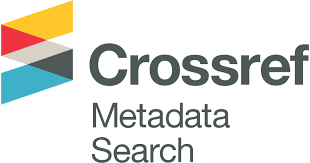Extraction of Polyhydroxybutyrates from Bacillius cereus isolated from Engine Oil-polluted Soils
DOI:
https://doi.org/10.58916/jhas.v8i2.481Keywords:
PHB, FITR, date molasses, Bacillus ceruesAbstract
In the present study a trial was carried out to isolate bacteria species from engine oil-polluted soils, the soil samples were diluted and spread on solid media at 37 oC incubation. The most species were then picked up from plates for identification, characterization, and storage for further use. According to the physical morphology and the shapes using gram stain the bacteria were belonged to Bacillus cerues, molecular technique using 16S rRNA gene were also carried out to confirm the types of species. The Sudan Black B was used to optimize the PHA granules in bacteria. The bacterium isolate were then grown in appropriate media, and date molasses, which was as carbon source was added to media to promote the growing cells and to accumulate PHB granules as intercellular product at different, range of temperature, pH, agitation speed, and carbon source concentration. The high level of PHB production was accumulated at 35 o with natural pH, and 150 rpm when date molasses was added at 15% (v/v). The PHB productions were characterized using biological techniques as FITR to confirm the functional group of PHA at range 4000-400 cm-1.
Downloads
References
Guo-Qiang Chen. 2009. A microbial polyhydroxyalkanoates (PHA) based bio- and materials industry. Chem. Soc. Rev.38, 2434-2446.
Anderson A J and Dawes E A. 1990. Occurrence, metabolism, metabolic role, and industrial uses of bacterial polyhydroxyalkanoates. Microbiol Rev. 54(4): 450–472.
Diogo Vicente, Diogo Neves Proença, and Paula V. Morais. 2023. The Role of Bacterial Polyhydroalkanoate (PHA) in a Sustainable Future: A Review on the Biological Diversity. Int J Environ Res Public Health. 20(4): 2959.
Oliveira F.C., Freire D.M.G. & Castilho L.R. 2004. Production of poly(3-hydroxybutyrate) by solid-state fermentation with Ralstonia eutropha. Biotechnology Letters volume 26, pages1851–1855.
Kim Y.B., Lenz R.W., 2001. Polyesters from microorganisms. In Sceper T, (editor). Biopolyester: Advances in Biochemical Engineering, Biotecnology: 52 - 77.
Sri Kumalaningsih, Nur Hidayat and Nur Aini. 2011. Optimization of Polyhydroxyalkanoates (PHA) Production From Liquid Bean Curd Waste by Alcaligenes Latus Bacteria. J. Agric. Food. Tech., 1(5) 63-67.
Demet Çetin, Ufuk Gündüz, Inci Eroilu, Meral Yücel and Lemi Türker. 2006. Poly-ββββ-hydroxybutyrate accumulation and releasing by hydrogen producing bacteria, Rhodobacter sphaeroides O.U.001. A transmission electron microscopic study. African Journal of Biotechnology . 5 (22), pp. 2069-2072.
Darshan Marjadi and Nishith Dharaiya. 2012. Bioprospecting and Characterization of poly-β-hydroxyalkanoate (PHAs) producing Pseudomonas Spp. isolated from edible oil contaminated soil. Research in Biotechnology, 3(5): 01-08.
Aarthi N., Ramana K.. 2011. Identification and Characterization of Polyhydroxybutyrate producing Bacillus cereus and Bacillus mycoides strains. International Journal on Environmental Sciences.
Ranganadha Reddy Aluru. 2020. Screening and Biochemical Characterization of PHB Producing Bacterium Isolated from Costal Region of Andhra Pradesh. Environmental and Earth Sciences Research Journal. 7, No. 3, pp. 116-120.
Phanse, N., Chincholikar, A., Patel, B., Rathore, P., Vyas, P., Patel, M., 2011, Screening of PHA (poly hydroxyalkanoate) producing bacteria from diverse sources, International journal of Biosciences, 1 (6), 27-32.
Collee, J.G., Duguid, J.P., Fraser, A.G., Marmion, B.P.1989. Practica Medical Microbiology. 3th Ed. Mackie and McCartney, pp. 54-55.
Marise A. Hussey. Anne Zayaitz. 2016. Endospore Stain Protocol. American Society for Microbiology.
sraa AbdulJabbar Ibrahim. 2016. 16S rRNA Gene Sequencing for Identification of Some Enterobacteriaceae Species Isolated from Tigris River. Al- Mustansiriyah J. Sci., Vol. 27, No 3.
Selvakumar K , Srinivasan G, Baskar V and Madhan R. 2011. Production and isolation of polyhydroxyalkanoates from Haloarcula marismortui MTCC 1596 using cost effective osmotic lysis methodology. European Journal of Experimental Biology, 1 (3):180-187.
Laila Muftah Zargoun, Nor Azimah Mohd Zaina,Shafinaz Shahir. 2015. Isolation and Characterization Polyhydrobutyrate (Phb) Producing Bacteria From Waste Cooking Oil Using Pomegranate Molasses As Carbon Source. Jurnal Teknologi 77:31 (2015) 85–93.
Celenk Molva , Mert Sudagidan , Burcu Okuklu. 2009. Extracellular enzyme production and enterotoxigenic gene profiles of Bacillus cereus and Bacillus thuringiensis strains isolated from cheese in Turkey. Food Control 20. 829–834.
Nor Azimah Mohd Zaina, Laila Muftah Ali Zargoun, Nur Fatihah Elias, Mohd Firdaus Abd Wahab, Mohd Suardi Suhaim. 2016. Isolation and Characterization of Polyhydroxyalkanoates (Phas) Producing Bacteria from Brackish Stream. Jurnal Teknologi. 78:7. 75–81.















